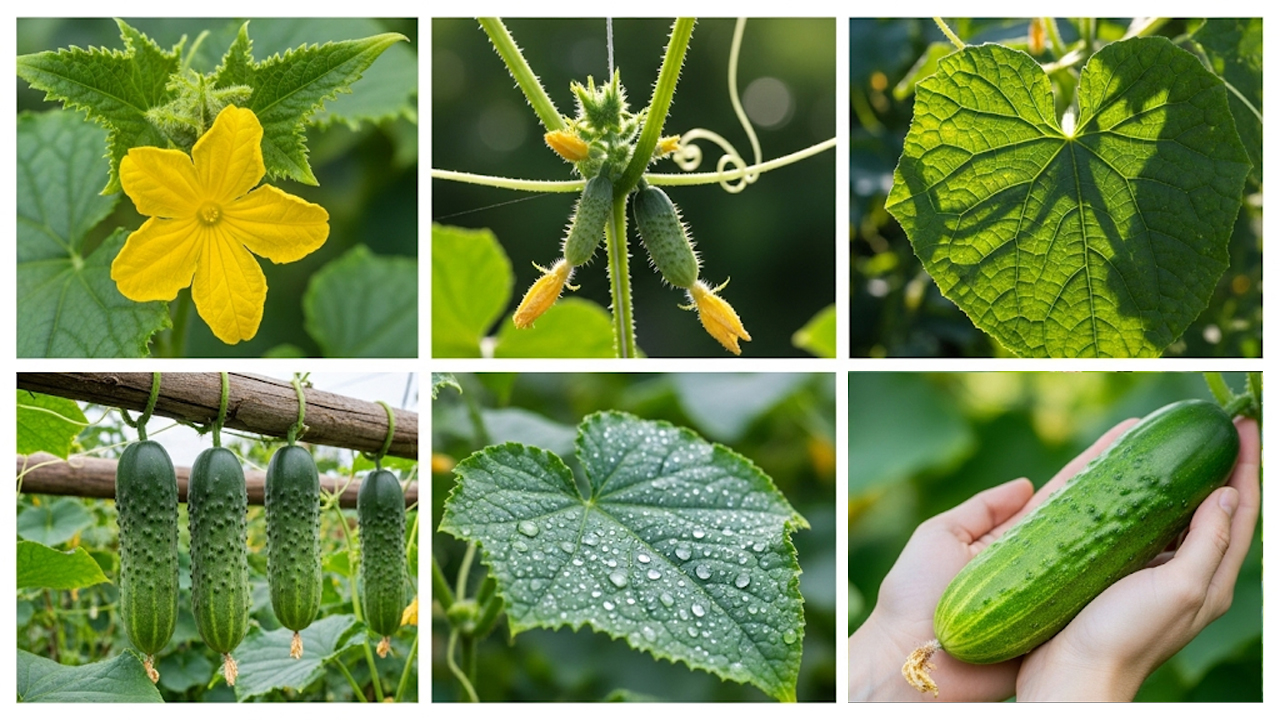Join on WhatsApp
Get the latest updates directly on WhatsApp – motivation, news & more!
This guide offers a clear, step-by-step plan for growing cucumbers at home, from choosing the right varieties to planting seeds, caring for the plants, and harvesting your crop. Cucumbers are one of the easiest vegetables for beginners to grow, making them an excellent starting point for anyone joining the growing movement toward home gardening.
As food prices rise and people focus more on sustainable living, the popularity of home gardening continues to grow. With just a sunny balcony or a small patch of soil, you can produce fresh cucumbers at home and enjoy the benefits of healthier, chemical-free food.
Why More People Are Growing Their Own Food
The shift toward home gardening is influenced by both practical and personal reasons. A 2023 report from the National Gardening Association shows that millions of households have started producing their own vegetables, motivated by better flavor, improved nutrition, and reduced costs. Growing your own food also removes concerns about pesticide use and long-distance transportation.
“When you grow your own food, you are the final quality control,” explains Dr. Sarah Williams, horticulturalist at the University of California Agriculture and Natural Resources. This hands-on approach creates a stronger connection to the food you eat and builds appreciation for the overall food system. Cucumbers, with their quick growth and generous yields, are a great choice for those just starting out.
Step-by-Step Plan for Growing Cucumbers at Home
A successful cucumber harvest depends on meeting the plant’s needs for sunlight, water, and proper support. By following a few straightforward steps, you can grow your own healthy cucumbers from seed to harvest.
Selecting the Right Cucumber Variety
Choosing the right variety is the first and most important step. Cucumbers generally fall into two main growth types:
Vining Cucumbers: These are the most common type, producing long vines that can be trained to climb trellises, fences, or stakes. This vertical growth saves space, improves airflow, and reduces the risk of disease. Varieties such as Marketmore 76 (for slicing) and Boston Pickling (for pickling) are popular choices.
Bush Cucumbers: These grow in a compact, bush-like form, making them ideal for container gardening and small spaces. Though their yields are smaller, varieties like Spacemaster and Bush Champion are excellent for patios and balconies.
Planting Time, Soil Preparation, and Method
Cucumbers are warm-season plants that cannot tolerate frost. Plant them only after all risk of frost has passed and the soil temperature is at least 70°F (21°C).
They grow best in fertile, well-draining soil with a pH between 6.0 and 7.0. Adding aged compost or organic matter before planting will improve soil quality. Plant seeds about 1 inch deep. For vining varieties with trellises, space them around 1 foot apart. For bush types, follow the spacing on the seed packet, usually 2 to 3 feet apart.
Caring for Your Cucumber Plants
Consistent care is essential for a healthy crop.
Sunlight: Cucumbers need at least 6 to 8 hours of direct sunlight daily.
Watering: Keep the soil evenly moist but not waterlogged. As a general guide, provide about 1 inch of water each week, increasing during hot or dry periods. Watering in the morning at the base of the plant helps reduce the risk of fungal diseases such as powdery mildew.
Support: Vining cucumbers benefit from trellises or cages installed at planting time. This keeps fruit off the ground, produces straighter cucumbers, and makes harvesting easier.
Harvesting Cucumbers and Handling Common Problems
Cucumbers are usually ready for harvest in 50 to 70 days, depending on the variety. Slicing cucumbers are best when 6 to 8 inches long, firm, and evenly green. Pickling types should be harvested smaller, around 2 to 4 inches long.
Harvest regularly to keep the plant producing. Overripe cucumbers left on the vine can slow down new growth. Cut the stem about a quarter inch above the fruit with a knife or pruning shears to avoid damaging the plant.
Common pests include cucumber beetles and aphids. The U.S. Environmental Protection Agency recommends integrated pest management methods, such as attracting beneficial insects like ladybugs, using row covers, and applying insecticidal soap only if needed.
Expanding Your Gardening Skills
Once you master cucumbers, you can apply the same principles to a variety of other vegetables. The effort you put in will reward you with fresh, homegrown produce and a more self-sufficient lifestyle. Gardening not only saves money but also connects you to the food you eat in a meaningful way.
